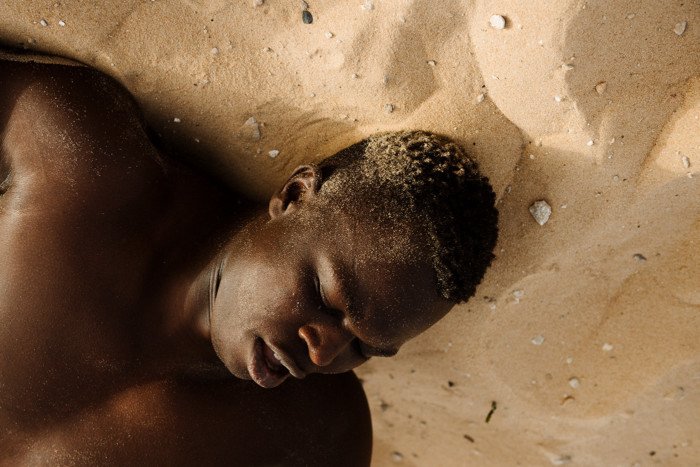Mortes | Diana Michener
Written by Eloise King-Clements
Mortes is not for the faint of heart. Cow heads skidding across blood on a butcher’s floor, fetuses with birth defects preserved in formaldehyde, and bodies, having died traumatically, being autopsied in a lab. Disposal, preservation and examination. Despite the brutal subject matter, Diana Michener’s photographs, divided in three chapters—Heads, Foetus and Corpus—approach the subjects with a mixture of clinical and spiritual fascination, bringing new light to the discourse around death.
Heads, the inaugural chapter, serves as an abrupt introduction to the world of Mortes. Michener writes about her interest in capturing the moment the cow’s spirit leaves its body—a moment she describes as “palpable” and “sublime". But the crisp stills, with the unseeing eyes, evoke a piercing loneliness—the head carelessly flung from its body, a brutal violation of the animal’s once-sturdy anatomy. The crop is tight which somehow magnifies the cow’s dull gaze and evokes a helpless sense of humiliation.
The snapshots of the cow heads introduces a dichotomy: the ephemeral moment when the soul leaves the body paired with the inherently permanent medium of photography. Michener ponders the nature of time. Nothing is transient, and nothing is permanent. Yet everything is both transient and permanent. Often photographs come back to this crux—the tug-of-war between capturing and packaging fleeting moments. Like a lasso flung towards a…ahem…cow. Halting time, halting movement, halting decay inside a frame.
The subsequent chapter—babies with birth defects pruned in formaldehyde—examines this preservation of time, and (lack of) decay. Michener, in a quasi-scientific manner, awed by the possibilities of human creation, set out to spend her days photographing and honoring each fetus. The sedated photographs depict conjoined twins, a cyclops, and a severed head. The chapter is a twisted meditation on the possibilities of creation. The photographs are intimate in their closeness—the details of the plastic and wrinkled skin jump out at you—but they maintain a cool distance due to the jar’s uniform orientation and lighting.
In the final chapter, the portraits of autopsies, she turns her lens upon us. During the autopsies, she had to obey the regulations of the forensic pathologist, so Michener’s images are more constrained—no lighting equipment could be used. She writes of our organs as “self portraits” but the images are of the body’s faces, which vary from peaceful to pained. Nevertheless, the photographs confront the viewer and seem to ask: if our bodies matter so much to us in life, what is their place in death?
The three chapters examine the transience and finality of death. Its thread is an interest in the relationship of body to soul, but the material is loosely stitched, the chapters jolt together. Michener does not soften that knee-jerk reaction to graphic depictions of death. You cannot help but recoil from the images. Through Michener’s own ease and fascination with death, Mortes prompts introspection on one’s own relationship to death. Do you see the spirit exit the body? As you peek through your fingertips at the harsh photographs, you can’t help feel like they’re opening your eyes. The uncoiling is where the true discovery lies.
You can get your copy of Mortes from Steidl.













